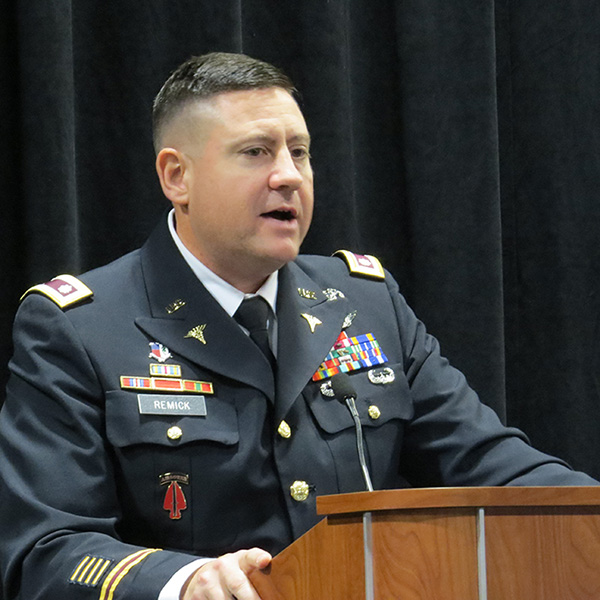Past and Present Team Up to Unlock Future of Army Medicine at AUSA

Launching into a speech on emerging efforts to aid combat trauma victims at the packed Association of the United States Army event in Washington, D.C., on Oct. 5, Lt. Col. Kyle Remick spoke frankly about the human body and how it works.
"Your body is like a bucket," said Remick, the military deputy for the Combat Casualty Care Research Program. "If there's a hole in the bucket, then you need to fill the bucket with blood ... but you also need to plug the hole, too."
The AUSA is an annual comprehensive military exhibition and professional development event held exclusively for members of the Army and affiliate scientists, vendors and contractors. As part of the event's overall focus on the theme of "readiness," chosen speakers were asked to present material related to key innovations in their particular fields.
In his overview of the CCCRP's role in developing the Resuscitative Endovascular Balloon Occlusion of the Aorta, or REBOA, a tool designed to stop severe truncal bleeding by routing a small, inflatable balloon into the aorta, Remick also touched on the military's success in using similar emerging technologies to close key program gaps and save lives. Studies show that between 2005 and 2013, the number of U.S. casualties in Afghanistan decreased despite a substantial increase in the overall injury severity.
"That's a great amount of success," said Remick, who spoke to a crowd that included Surgeon General of the U.S. Army and Commanding General of the U.S. Army Medical Command Lt. Gen. Nadja West and U.S. Army Medical Research and Materiel Command and Fort Detrick Commanding General Maj. Gen. Barbara Holcomb, "but given that more than 80 percent of combat deaths occur in the prehospital environment, we now have to replicate that success for Warfighters in more austere conditions and far-forward environments."
For incoming Army Trauma Training Department Director Col. Kirby Gross, the future of resuscitation products can be found by looking back to the era of pin-up girls, wide-brimmed hats and Ava Gardner.
"We're finally realizing the value of something we first learned back in the 1940s," said Gross, speaking alongside Remick on the value of whole blood in the treatment of trauma patients. "We simply got away from the basics in the 1970s, 1980s and 1990s."
According to Gross, the culprit in those decades was an over-reliance on blood components and crystalloid therapy, the latter of which can cause notable side effects like edema. Therefore the actual "innovation," with regards to the use of whole blood, is not so much a technological advancement as it is a reassessment of known factors.
"The Army rangers now use Type-O blood for point-of-injury care while serving in-theater," said Gross, "which shows you just how far we've come back around."
Said Remick, "Despite these successes, we still have key gaps in several areas, so it's important to forge ahead for the good of the service and the country."














